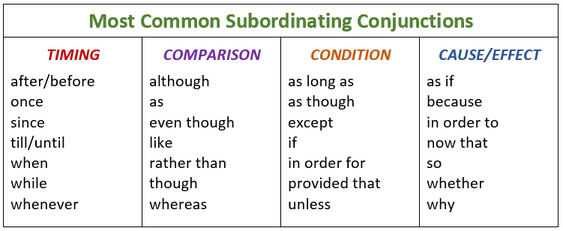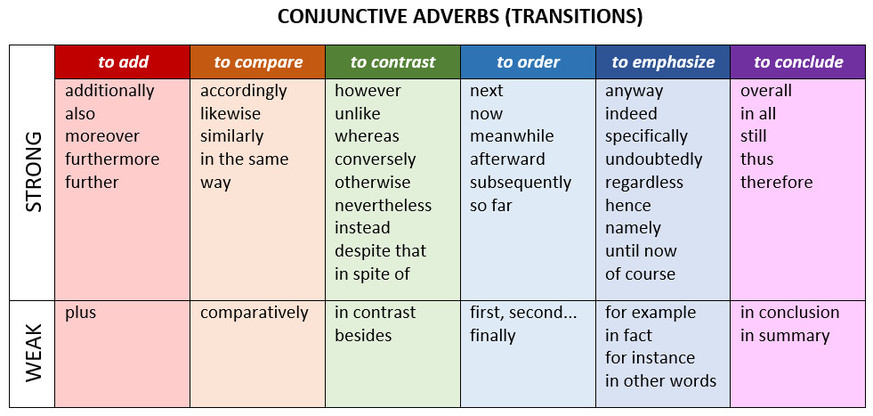Expressive parts of speech can say so much about the world, but they don't work well in isolation. Imagine a sentence like a body: nouns are like a skeleton (the most elemental and basic part), verbs are organs (diverse yet needed),and modifiers as musculature (some bodies have more developed ones than others). Yet these parts are all just useless meaty lumps without nerves and connective tissue making these parts work together. Conjunctions act as this connective tissue, a language glue that allows speech to function. Conjunctions join words, phrases, clauses, and occasionally sentences. Just as different types of tissue connect different systems, different types of conjunctions connect different types of speech.
COORDINATING CONJUNCTIONS
Coordinating conjunctions join items that are equal to another, like two nouns, two predicate phrases, and two independent clauses. There are only seven coordinating conjunctions, which are known by the acronym FANBOYS: for, and, nor, but, or, yet, so. These seven words are not interchangeable and create different relationships between what they join:
FOR: gives a reason (I missed the bus, for I had an emergency meeting after school.)
AND: adds something (I want to climb a fourteener, fight a bear, and act in a movie before I die.)
NOR: shows two non-options (I don't care about the environment, nor do I care about education policy.)
BUT: shows a contrasting fact or opinion (I like comedians, but I'm not a fan of comics that swear.)
OR: creates an option (Do you want to see a movie or play a game?)
YET: shows a contrasting possibility or feeling (I enjoy reading, yet it takes so much time.)
SO: shows an effect (I planted in early May, so I should have some tomatoes pretty soon.)
Coordinating conjunctions are usually not preceded by a comma (David and I drove to the pier and went fishing) except when in a list or connecting clauses. When a coordinating conjunction is in a list, it is preceded by a special comma called the Oxford comma (I don't like spicy foods, eggplant, or garlic). When a coordinating conjunction connects two independent clauses, it must be preceded by a comma (I don't want to go to college, yet it does seem like a good idea).
FOR: gives a reason (I missed the bus, for I had an emergency meeting after school.)
AND: adds something (I want to climb a fourteener, fight a bear, and act in a movie before I die.)
NOR: shows two non-options (I don't care about the environment, nor do I care about education policy.)
BUT: shows a contrasting fact or opinion (I like comedians, but I'm not a fan of comics that swear.)
OR: creates an option (Do you want to see a movie or play a game?)
YET: shows a contrasting possibility or feeling (I enjoy reading, yet it takes so much time.)
SO: shows an effect (I planted in early May, so I should have some tomatoes pretty soon.)
Coordinating conjunctions are usually not preceded by a comma (David and I drove to the pier and went fishing) except when in a list or connecting clauses. When a coordinating conjunction is in a list, it is preceded by a special comma called the Oxford comma (I don't like spicy foods, eggplant, or garlic). When a coordinating conjunction connects two independent clauses, it must be preceded by a comma (I don't want to go to college, yet it does seem like a good idea).
CORRELATIVE CONJUNCTIONS
Correlative conjunctions are a set of an adverb and a coordinating conjunction that work together as a pair before the verb. Correlative conjunctions are not as common as coordinating conjunctions, but they are clearer in nature. There are only six recognized correlative pairs in English:
- EITHER/OR: Either you give me the letter or I will take it from you.
- WHETHER/OR: You shouldn't base your choice of prom date on whether Jason or Kevin has the better car.
- NEITHER/NOR: Neither man nor beast could survive that fall.
- BOTH/AND: Both Democrats and Republicans were dissatisfied with the debate.
- NOT/BUT: Not the poor but the super-rich benefited from the deep tax cuts.
- NOT ONLY/BUT ALSO: Not only the Republicans but also the Democrats and Independents saw the political threat of the Executive Order.
SUBORDINATING CONJUNCTIONS
Subordinating means "to be of a lower order." Conjunctions connect clauses. Therefore, a subordinating conjunction begins a dependent clause and sets up how that clause relates to the independent clause. Here are the most common ones:
Notice a pattern? Most words that are coordinating conjunctions are also prepositions or adverbs when used in a different way. Thus, subordinating conjunctions only start adverbial dependent clauses (relative clauses start relative dependent clauses and noun clause identifiers start noun clauses). If the adverbial dependent clause comes before the independent clause, a comma should be between the two clauses. If the adverbial dependent clause comes after the independent clause, no comma is needed.
CONJUNCTIVE ADVERBS (transitions)
So conjunctions can join words, phrases, and clauses--can they connect sentences? A special type of conjunction called a conjunctive adverb does just that: conjunctive adverbs are inserted into a second sentence to show a relationship to the first sentence.If these conjunctive adverbs look familiar, they should. They are commonly referred to as transition words.
Studies show that this trend is escalating. Additionally, the scientific community has increased research on the topic.
The French declared it law in 1750. That law, however, would only last 23 years.
Finally, the result demonstrate our hypothesis was correct. We must therefore stop adding this to the water.
The French declared it law in 1750. That law, however, would only last 23 years.
Finally, the result demonstrate our hypothesis was correct. We must therefore stop adding this to the water.
Like coordinating conjunctions and subordinating conjunctions, conjunctive adverbs can be grouped by purpose, as each grouping creates a different type of transitional relationship.

